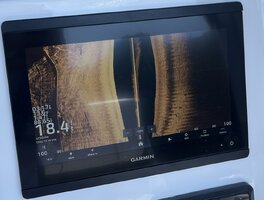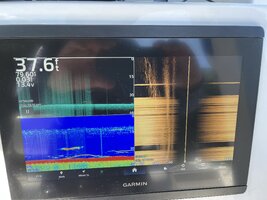Bubba7827
Jet Boat Junkie
- Messages
- 102
- Reaction score
- 34
- Points
- 127
- Location
- Pensacola, FL
- Boat Make
- Yamaha
- Year
- 2021
- Boat Model
- FSH Sport
- Boat Length
- 19
I have a 2021 195FSH which I purchased used this past spring.
One of the things I am trying to fix is an apparent interference showing up on the sonar (garmin) when I turn on the trolling motor (minnkota)
I am able to operate the sonar but when I start the trolling motor, the sonar picks up significant noise rendering it not very useful.
I suspect the grounding.
The TM is powered by 2 12v batteries wired as a 24 v system.
The garmin is powered by the house battery.
I am told I need to separate the grounds but I am not sure how to do that. I believe that the two units are currently on the same ground buss.
What does the ground buss go back and connect to? Can I add a second independent ground buss for the TM system?
Hopefully somebody here knows what I should do cuz I am pretty much taking wild stabs here.
But at least I have a good excuse for not catching fish.
One of the things I am trying to fix is an apparent interference showing up on the sonar (garmin) when I turn on the trolling motor (minnkota)
I am able to operate the sonar but when I start the trolling motor, the sonar picks up significant noise rendering it not very useful.
I suspect the grounding.
The TM is powered by 2 12v batteries wired as a 24 v system.
The garmin is powered by the house battery.
I am told I need to separate the grounds but I am not sure how to do that. I believe that the two units are currently on the same ground buss.
What does the ground buss go back and connect to? Can I add a second independent ground buss for the TM system?
Hopefully somebody here knows what I should do cuz I am pretty much taking wild stabs here.
But at least I have a good excuse for not catching fish.



